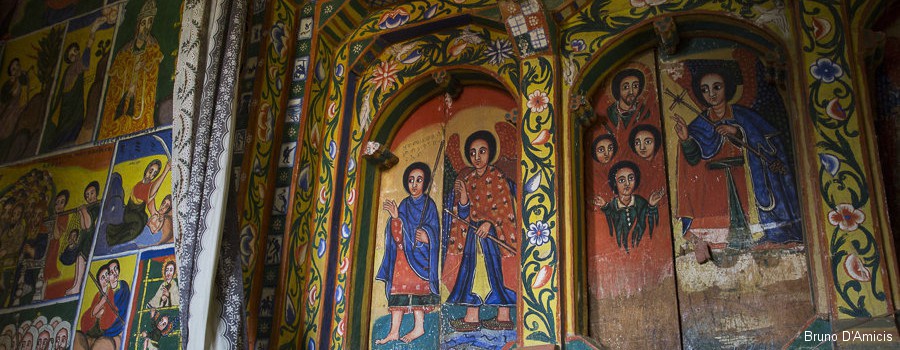
Keeping ancient faiths alive
Faith is an extremely important part of culture in Ethiopia. Several religions are practised in the Lake Tana Biosphere Reserve, coexisting in harmony with one another as they have done for centuries.
Judaism
There are small pockets of Ethiopian Jews remaining in the Lake Tana Biosphere Reserve after the majority were airlifted to Israel in the 1980s and 1990s. They trace their history in Ethiopia back to the 1st century BC, Emperor Menelik I, the Queen of Sheba and King Solomon.
Ethiopian Orthodox Christianity
The majority of the population of the Lake Tana Biosphere Reserve practice Ethiopian Orthodox Christianity. This church was first founded in the 4th century and is thought to have its roots in Judaism, as many aspects such as food restrictions and the traditional round churches (as seen on the islands in Lake Tana) are considered Jewish in origin.
The Ark of the Covenant, a chest containing the stone tablets on which the Ten Commandments were written is of great importance to the church. Ethiopians believe the Ark was brought from Jerusalem to Ethiopia in the 1st millennium BC by the Emperor Menelik I, the son of the Queen of Sheba and King Solomon. It is believed that the monastery on the island Tana Qirqos in the eastern part of Lake Tana housed the Ark between 400 BC and 400 AD, before it was moved to be kept under guard in a treasury near Aksum’s St Mary of Zion church. Every Ethiopian church has a replica of the stone tablets, known as the tabot.
Islam
Islam is the second largest religion in the Lake Tana Biosphere Reserve. The religion was introduced to Ethiopia in the 1st century AD.
